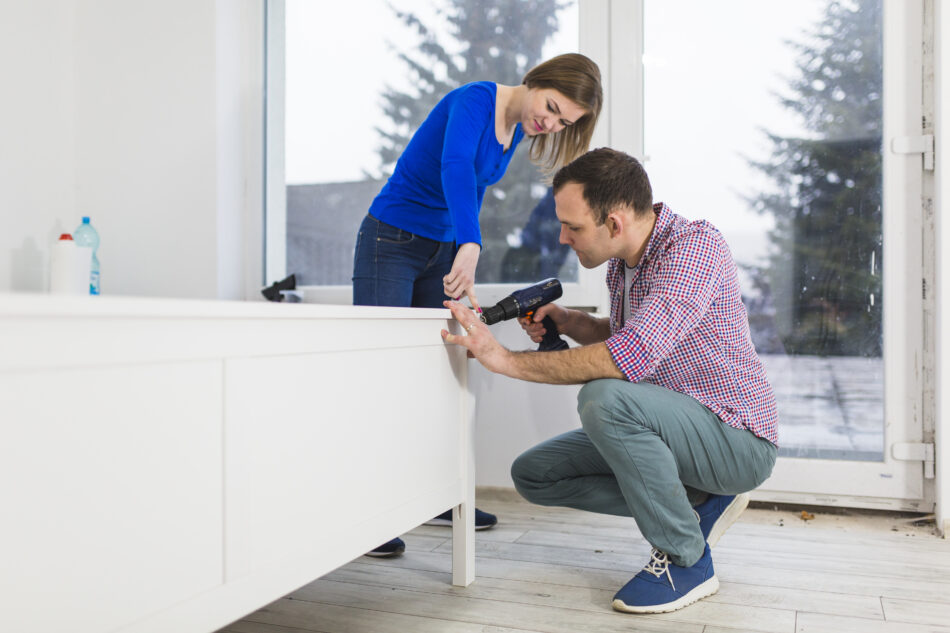Silicone caulking is a versatile material used in many home repair projects. It creates a flexible and waterproof seal that lasts for years. Homeowners use it to fill gaps, seal joints, and prevent moisture damage. It works well on different surfaces and is easy to apply.
What is Silicone Caulking
Silicone caulking is a sealing material made from silicone polymers. It stays flexible after curing, making it ideal for areas with movement or vibration. Unlike acrylic caulk, silicone does not shrink or crack easily. It resists water, heat, and chemicals, which is why it is common in kitchens, bathrooms, and outdoor spaces.
Long Lasting Seal
One of the biggest advantages of silicone caulking is durability. It can last for many years without breaking down. The seal remains strong even in extreme temperatures. It does not become brittle over time. This makes it a cost-effective choice for home repairs.
Waterproof Protection
Silicone caulking offers excellent waterproofing. Once applied, it prevents water from seeping into cracks or gaps. This is essential in bathrooms, kitchens, and around windows. It helps avoid mold growth and water damage. Waterproofing also protects the structural integrity of your home.
Flexible and Crack Resistant
Movement in a house is normal due to changes in temperature and humidity. Materials expand and contract. Silicone caulking can stretch and bend without breaking. This flexibility helps it stay intact even in high-stress areas.
Heat and Cold Resistance
Silicone caulking works well in both hot and cold conditions. It remains stable under high heat and does not become stiff in freezing temperatures. This makes it perfect for sealing areas exposed to sunlight, ovens, or outdoor weather.
Works on Different Surfaces
Silicone caulking bonds with a wide variety of materials. You can use it on glass, metal, wood, ceramic, and some plastics. This makes it a versatile product for many repair jobs. It also adheres to painted and unpainted surfaces.
Mold and Mildew Resistance
Bathrooms and kitchens are prone to mold and mildew because of moisture. Many silicone caulking products have added mildew-resistant properties. This helps keep the sealed area looking clean and fresh. It also improves hygiene in your home.
Easy Application
Applying silicone caulking is simple with the right tools. A standard caulking gun and a steady hand are all you need. Most products are ready to use straight from the tube. Cleanup is minimal if done correctly during application.
Energy Efficiency
Sealing gaps with silicone caulking can improve energy efficiency. It prevents air leaks around windows, doors, and vents. This keeps indoor temperatures stable and reduces heating or cooling costs.
Outdoor Uses
Silicone caulking is not just for indoor projects. It works well for sealing gutters, siding, and outdoor fixtures. Its weather resistance means it can handle rain, snow, and sun exposure.
Low Maintenance
Once applied and cured, silicone caulking needs very little upkeep. It does not require repainting or frequent replacement. A well-applied bead can last many years before needing attention.
Common Home Repair Uses
Bathroom Sealing
Silicone caulking is ideal for sealing around bathtubs, showers, and sinks. It stops water from getting into wall gaps or under tiles. This protects against costly repairs caused by moisture damage.
Kitchen Countertops
Sealing the joint between countertops and backsplashes with silicone caulking prevents water infiltration. It also keeps dirt and food particles from settling in gaps.
Window and Door Frames
Applying silicone caulking around window and door frames stops drafts. It also blocks rainwater from entering the home.
Plumbing Fixtures
Silicone caulking seals around pipes, faucets, and drains. It prevents leaks and keeps connections watertight.
Roof and Gutter Repairs
Silicone caulking can patch small cracks in roofing materials or gutter joints. It helps prevent leaks during heavy rains.
Tips for Applying Silicone Caulking
Prepare the Surface
Clean the area before applying silicone caulking. Remove dirt, old caulk, and moisture for better adhesion.
Use the Right Tools
A good quality caulking gun ensures smooth and even application. Keep a damp cloth or smoothing tool nearby.
Apply Steady Pressure
Squeeze the caulking gun evenly to create a smooth bead. Avoid gaps or lumps in the seal.
Smooth the Bead
Use a caulk finishing tool or your finger to smooth the bead before it sets. This improves the seal and appearance.
Allow Proper Curing
Follow the manufacturer’s instructions for curing time. Do not expose the caulk to water before it fully sets.
Choosing the Right Silicone Caulking
Different types of silicone caulking are available for specific jobs. Some are for kitchens and baths, while others are for high-temperature areas. Check the product label to match it with your project needs.
Advantages Over Other Sealants
Silicone caulking has several advantages compared to other sealants like acrylic or latex. It lasts longer, stays flexible, and resists moisture better. While it may cost more upfront, it saves money in the long run due to its durability.
Safety Considerations
When applying silicone caulking, make sure the area is well-ventilated. Some products may have a strong odor before curing. Wear gloves to protect your skin during application.
Storage and Shelf Life
Keep silicone caulking tubes sealed when not in use. Store in a cool, dry place. Proper storage ensures the product stays usable for future repairs.




